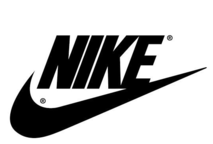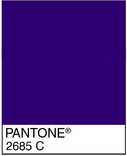
What Is Trade Mark Infringement?
What is a trade mark?
A trade mark is a mark used to identify a trader’s unique goods or services. Essentially, a trade mark is a brand which allows consumers to differentiate between your goods and services and those of another person.
The Trade Marks Act 1995 (Cth) (‘Trade Marks Act’) sections 6 and 17 provides that a trade mark is a sign used, or intended to be used to distinguish goods or services dealt with or provided in the course of trade by a person from goods or services so dealt with or provided by any other person.
A sign includes the following or any combination of the following:
“any letter, word, name, signature, numeral, device, brand, heading, label, ticket, aspect of packaging, shape, colour sound or scent”.
Examples of popular trade marks
Some examples of well-known trade marks include marks such as “Nike” or “Coca-Cola” and even the pantone colour 2685 C for Cadbury.
Consider some of the trade marks below:


These examples show that registrable trade marks can take on many forms, and are not just limited to the wording of a brand. Other interesting trade marks include the smell of cinnamon applied to furniture (TM No: 1858042) or sounds, such as the once popular “Yahooooo” yodelling ad by Yahoo (Tm No: 827728).
How is a trade mark infringed?
Section 120 of the Trade Marks Act provides that a registered trade mark is infringed when a person uses as a trade mark a sign that is substantially identical with, or deceptively similar to, the trade mark in relation to goods or services in respect of which the trade mark is registered.
What is substantially identical or deceptively similar?
The two tests are independent of each other, and consequently must be considered in different ways.
In determining whether the marks are substantially identical, Windeyer J analysis in Shell Co. (Aust) Ltd v Esso Standard Oil (Aust) Ltd (1963) should be noted (at 414):
“They (the two marks) should considered side by side their similarities and differences noted and the importance of these assessed having regard to the essential features of the registered mark and the total impression of resemblance or dissimilarity that emerges from the comparison”.
As to deceptive similarity, Windeyer J suggests that:
The test “is between, on the one hand, the impression based on recollection of the plaintiff’s mark that persons of ordinary intelligence and memory would have; and, on the other hand, the impressions that such persons would get from the defendant’s television exhibitions”.
The test of deceptive similarity advocated by Windeyer J should be considered in light of the following definition of ‘deceptively similar’ under the Trade Marks Act:
“A trade mark is taken to be deceptively similar to another trade mark if it so nearly resembles that other trade mark that it is likely to deceive or cause confusion”.
Goods or services of the same description or closely related
A registered trade mark can be infringed by another sign that is substantially identical with, or deceptively similar to, the trade mark in relation to goods or services of the same description, or, closely related to the goods or services of the registered trade mark.
Importantly, infringement can occur where a sign is being used in relation to goods or services different to those classes of goods or services of the registered trade mark. However, there must be some consideration of the tests commonly used by the courts in comparing goods or services, such as:[1]
- the nature and characteristics of the goods or services;
- the origin of the goods or services;
- the purpose of the goods or services;
- the trade channels through which the goods or services are sold or provided;
- whether the goods or services are provided or produced by the same person or provided to the same customer.
Well known trade marks
In addition, the Trade Marks Act provides that trade marks that are well known in Australia are afforded special protection, and as such, may be infringed by another sign that is substantially identical with, or deceptively similar to, the trade mark in relation to unrelated goods or services.
Take-away points
- a registered trade mark may be infringed by another sign that is substantially identical with, or deceptively similar to the trade mark in relation to goods or services of the same description, or, closely related to the goods or services of the registered trade mark;
- in considering whether a trade mark is well known in Australia, you should consider the extent to which the trade mark is known within the relevant sector of the public;
- you should register your sign as a trade mark if you wish to protect your brand and prevent other similar traders from using your mark;
- if you have received a trade mark infringement notice, consider what defences may be available to trade mark infringement.
[1] Jellinek’s Appn (1946) 63 RPC 59.
Sam Gilbert, IP and Technology Consultant, B.A., LL.B University of Technology, Sydney
If you would like to know more about this article or how to register your sign as a trade mark, please do not hesitate to get in contact with the team at W3IP Law on 1300 776 614 or 0451 951 528.
Disclaimer. The material in this post represents general information only and should not be taken to be legal advice.


